The new Topping A90 is a $499 ‘Ultra High Performance’ desktop headphone amplifier and pre-amplifier. It joins the D90 DAC (which Linus recently reviewed here) to complete Topping’s flagship headphone range.
[responsivevoice_button]
Disclaimer: Topping sent a sample of the A90 to Headfonia to evaluate and share with our readers. As always, our thoughts and conclusions are our own.
“TOPPING is the top.” – Topping.
While this explanation on their company profile page is both succinct AND enthusiastic, Chinese manufacturer Topping certainly is enjoying a rise in prominence of late among audio enthusiasts. Whilst they initially gained notice chiefly for delivering exceptional value to budget-conscious punters; lately, they’ve been taking names when it comes to delivering levels of performance that have no doubt made established industry players take note and pay additional heed to their own objective performance.
Performance: a numbers game.
Just on that last point for a moment – there has been a sweeping wave of ‘objectivism’ wash through the industry in the past couple of years and has been driven by a couple of factors. Firstly, there’s been a lot of focus put on the measurements of amplifiers and DACs, and there’s subsequently been an arms race of sorts with manufacturers seeking to achieve greater power, lower distortion, and higher dynamic range (among other attributes). And frankly, you – the end customer – is the ultimate winner here.
The other factor that’s been partly responsible for this numbers-driven philosophy has been the abundant availability of previously unavailable technology, take for example THX amplification. Manufacturers have taken THX’s licensed Achromatic Audio Amplifier technology and have utilised it to great effect, two prime examples being Drop’s THX AAA 789 headphone amplifier, and SMSL’s SP200 THX 888 which I reviewed earlier this year. While putting the diminutive $289 SMSL amp through its paces, it did dawn on me that we might nearly be at the point where headphone amplification is, for lack of a better term, a solved problem. When distortion is inaudible, and music is played back at the proper frequency at the dynamic range at which it was mastered, can we call it a day?
Well, it seems we can’t, and that’s largely thanks to objectivity’s more unpredictable counterpart, good-old personal preference. While dead-neutral isn’t everyone’s’ audio cup-of-tea, we all have our own individual system, headphone, and pairing considerations that require different amplifier features, capabilities, and design. So then, there really can’t be a ‘perfect’ headphone amplifier. Right?
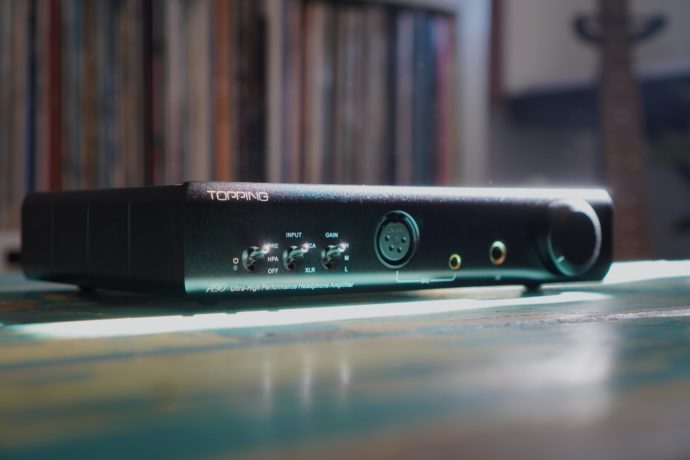
Topping A90 headphone amplifier
Enter the A90.
Well, it seems that the good people at Topping have certainly made an earnest tilt at what seems, on paper, to be a pretty ‘perfect’ kinda headphone amplifier: the new $499 A90. Or, to give it its full name, the A90 ‘Ultra-High Performance Headphone Amplifier’ (let’s just go with ‘A90’ from here, ok?). I’m going to throw in an early spoiler here: it performs astonishingly well, as its credentials would suggest, and is utterly competent when it comes to amplifying headphones. But will it work on your desktop, with your gear? Well, we’d better take a closer look.
So what is it? The A90 is a full-sized desktop headphone amplifier and preamplifier, with fully-balanced circuitry. It allows users to connect headphones via more traditional 4-pin XLR and 6.3mm single-ended connections, as well as the newer 4.4mm Pentaconn connector which is becoming embraced more and more widely by global manufacturers. IEM users might bemoan the lack of a 2.5mm balanced or 3.5mm single-ended connection, but Topping’s choice of 4.4mm Pentaconn is a statement of intent that the A90 is intended to be a future-facing piece of equipment, and also one that the owner can hang onto for a long, long, time in terms of its power and versatility.
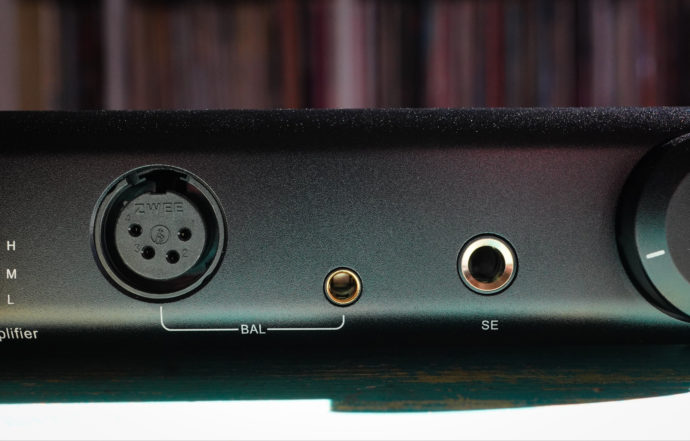
Topping A90’s 2 x balanced and single-ended headphone connectors
Speaking of power, Topping has squeezed a shed-load of it into the A90. It’s capable of a whopping 7.6 Watts of power into 16-ohms through either of its balanced connections and still manages to eke-out a whole Watt when driving a higher impedance 300-ohm load. The A90’s is no slouch in terms of its single-ended performance, being capable of a healthy 2 Watts at the usual 32-ohm benchmark. Topping has achieved this not by leveraging THX technology, but by developing their own Nested Feedback Composite Amplifier (NFCA) technology, which utilises a voltage-current hybrid feedback architecture and helps in achieving its starkly impressive dynamic range of 145dB. Total Harmonic Distortion is almost comically low, at <0.00007% when pushing 500mW at 32-ohms.
Topping has included a High/Medium/Low three-way gain switch on the front panel of the A90, allowing owners to opt between gain as low as -9.5dB and as high as 15.5dB, depending on the combination of single-ended and balanced inputs and outputs used. Coupled with a very low noise floor (0.2uVrms) plus an output impedance of less than ) 0.1-ohms, this should (on paper) allow the A90 to give usable volume control over sensitive IEMs, as well as hard-to-driver full-sized headphones without any undue changing to their frequency response – definitely something for me to put to the test.
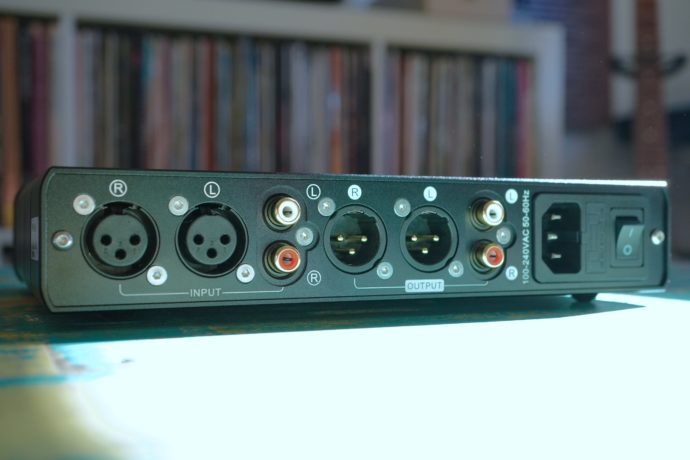
Topping A90’s balanced and single-ended inputs and pre-outs
The back panel of the A90 reveals both XLR and RCA input connections, plus matching balanced and single-ended pre-amp outputs. By toggling the RCA/XLR switch on the front, the user can switch between two different inputs sources (so long as one is balanced, and the other single-ended), and Topping has also made the A90 switchable between Pre-out and Headphone Amplifier modes via the standby switch on the front – they can’t operate at the same time, so bad luck if you had visions of listening to open-backed headphones with a subwoofer at the same time (I *might* have done this in the past). I find this to be a much neater solution than automatically muting the pre-out circuits when headphones are inserted, such as on most Schiit Audio headphone amplifiers. The A90’s pre-amp capability gives it a headstart over the aforementioned THX amps as it can perform double duties when paired with an upstream source, like a DAC or turntable, and a downstream with a power amplifier or powered monitors.
Head over to page 2 to read more about the A90’s build quality, and user experience.






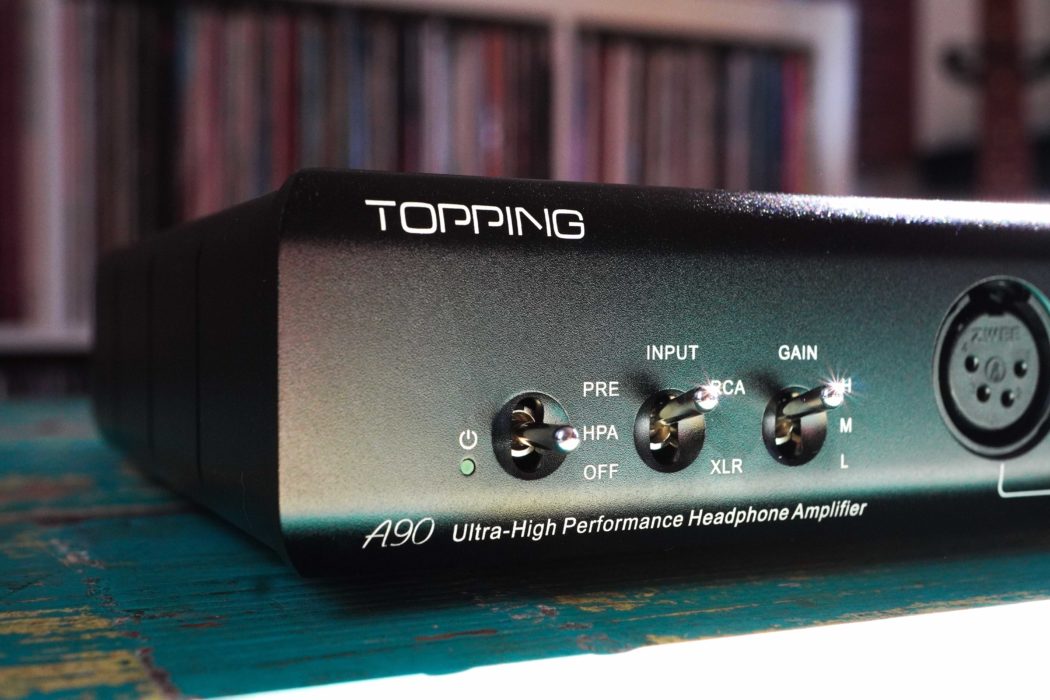
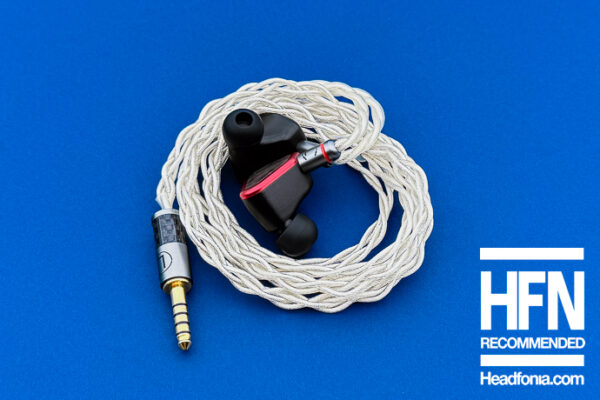
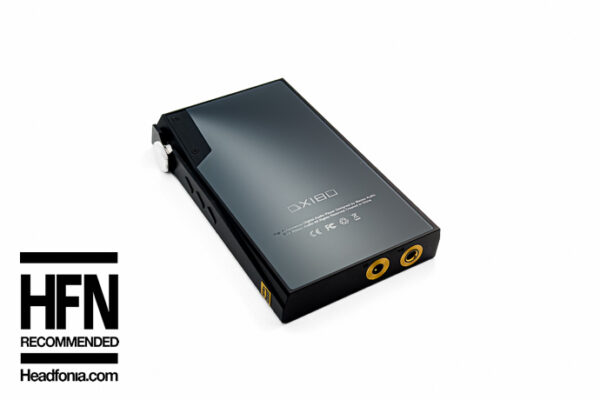
Lieven
last test comment
Clifford
I currently have a drop 789 and with my high end dac and hd800s have reached the best sound I have ever heard.
That said I’ve read that the 789 will compress the music and the A70 would be a far better choice. I’m setting up sereral systems around the house with a less expensive DAC. So getting another amp is in the planning.
Would I be improving my main system by replacing the AAA 789 with the A90?
I have asked the drop boards this and mostly got back less than useful information from people who have clearly not compared the two.
If the sound would not be much different using HD 800s headphones, I could save one or two hundred dollars on the computer setup. Not a lot but it would be a proven divise. If it will notably improve the sound, or slightly above notably improved, it would be worth the upgrade.
Thanks in advance.
Matty
You probably won’t hear a substantial difference. The A90 has the benefit of a fully balanced topology, plus balanced preamp facilities and 4.4mm output though.
Carl A
Hi,
Really good review, many thanks.
Some great comparisons with different headphones.
Can I ask what those aftermarket pads are that you are using with your Sine dx?
Be well.
Matty Graham
Thanks mate. They’re from Geekria: https://www.amazon.com/Audio-Technica-ATH-M50X-ATH-M20X-ATH-M30X-Headphones/dp/B07518L298/ref=cm_cr_arp_d_product_top?ie=UTF8&tag=headfi-20&ref_=d6k_applink_bb_marketplace
Danh
How do you feel about the Topping D90/A90 versus Burson Conductor 3x??? I know that 3x has the double price of D90/A90 combo, but can the Topping combo nearly reach the level of Burson? Thank you very much.
Matty Graham
Tough call without comparing them back-to-back. I loved the single-ended Conductor 3, ultimately it would come down to your budget and sense of aesthetics/form-factor preference. The 3X is hard to beat as an all-in-one unit.
Danh
Thank you very much. I have a chance to take the used 3x as the same price of new D90/A90 combo, for that reason I really want to compare both of them. The 3x receives lots of good reviews from many audiophiles. However, D90/A90 reach the highest measurement from Audio Science Review community. That’s make me wonder should I swap for the D90/A90 combo. For my main gear, I use JBL 305P powered speaker (3x acts at a DAC/Preamp), and HD660S.
Tony
ultra high performance for $499? Come on, be serious 🙂
Matty Graham
I would genuinely caution anyone arriving new to the hobby that price = performance (unless that’s a sarcastic emoji?). It’s a good time to be a consumer in this hobby right now with budget gear performing as strongly as this does.
Ben
Matty, I am curious as you have reviewed both the FA-10 and A90 what your feelings between the 2 are?
Matty Graham
Hi Ben, I personally haven’t listened to the FA-10 so I can’t give you a direct comparison. Linus reviewed it favourably, so it’s definitely also a very good amplifier. It’s a bit larger and a bit more expensive, so if a stepped attenuator and even more power (16 watts @ 32-ohms) are are important for you then it might be worth considering.
SAAD
I have both A90 and FA-10 while using D90 as my DAC. I love A90 over the FA-10. The A90 is transparent, powerful (can drive my Susvara easily) and extremely enjoyable to listen to. FA-10 is a colored sound, not as transparent, Mid-bass is boosted and midrange is made to sound meatier but not acurate. You can tell if you listen to the songs that you have listen for long period of time and also listen to the recorded voices of your friends and family. The treble has more detail on A90 with crisper leading and trail edges where FA-10 has smoother treble. I prefer A90 over the FA-10 for my headphone listening experience. It is not easy to beat A90.
Tibor
Hi. Guys, this is really the big question is Flux Lab FA-10 or 12 better? Timbre, slam, details. People are raving about it, high end for mid – fi price and we need answers!
Somebody help please! 🙂
Mel
Nice review and glad too see this site still running strong returning to after so many years👌
Question tough;
I am looking for a step up from my old jds element for my LCD2 (pre faz). And I’m going back/forth between the a90 and LP HPA RS02/08. Which one would u recommend?
Matty Graham
Thanks for reading Mel!
I’ve not had the chance to hear the Lake People set-up so I couldn’t give you a good comparison. I can say with confidence that the A90 will give you ample power and performance with the LCD2, and likely for anything else that you decide to pick-up down the track. What are you using as your source?
Mel
Hi Matty thank u for the reply!!! The only source I have now is my labtop and the element😁, but Im definitly be going to get a dac. Thinking about the d90 offcourse, but im open for suggestions.
Edu
Hi! I have a Chord Mojo a AKG K701 and a Sennheiser HD660S.
The A90 pairs well with the Mojo?And with the K701 and HD660S?
Thanks for your review;)
Matty
Hi Edu, if you’re looking to add a little more power to your set-up the Mojo ought to work perfectly as a DAC upstream of the the A90 when set to line-out mode. It has more than enough power for both the K701 and the HD660s and ought to provide a completely neutral signature to both.
taka
Hi- how does this A90 compare to Sabaj D5 or SMSL ?
Matty Graham
I haven’t listened to the Sabaj, but the Topping is more of a ‘purist’ analogue device and is also more powerful. Do you have a particular ‘SMSL’ in mind?
GR
I notice not many reviewers focus on “chip” vs discrete amps. The A90 sounds great as an op-amp example (which I think is it’s topology). Do you feel it suffers from dry and 2-D “chip” sound? And spending $1000+ on a decent entry/mid level fully discrete topology with decent transistors would add reality, depth, and tone, and be worth consideration?
GR
(and, ito of sound, not features, do you feel it differs much from the THX789? I find that tech to be impressive, netural, transparent, great detail, but still “flat” and “dry” compared to well-implemented discrete or tubes, and also a little fatiguing for long listening in the treble energy. I’ve heard some reviewers say the A90 is like the THX but a little more “musical” or “organic” – would you agree?)
ALex
Hi Matty,
Thanks for a great review. Do you know if there would be big difference between A90 + D90 vs Topping DX7 Pro ?
Thanks in advance